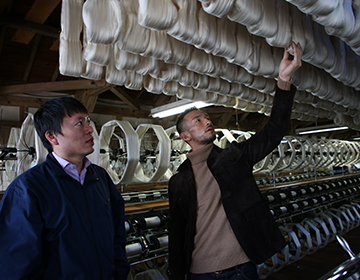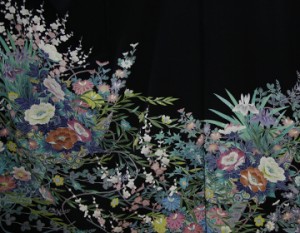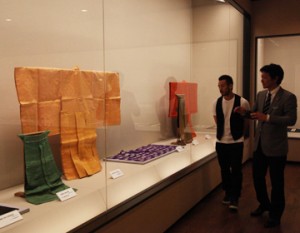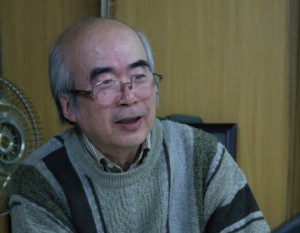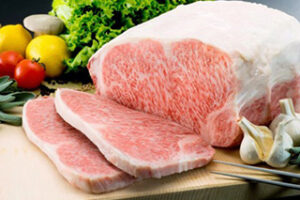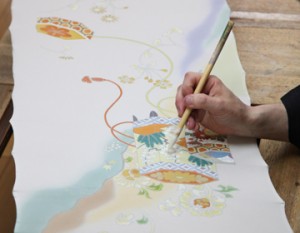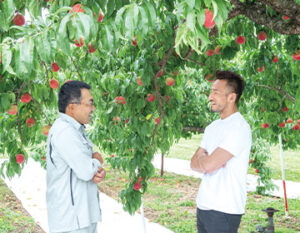Reviving Kawamata Silk through Innovation
Kawamata Town in Fukushima Prefecture, a silk textile production center with a long history, is now the focus of international attention . The company has continued to innovate Kawamata silk.
When it comes to silk fabrics in Tohoku, we often hear the names of Sendaihira and Yonezawaori, but there is also a silk production area in Fukushima Prefecture, isn’t there?
Hidetoshi Nakata walks through the factory and observes the work being done. Next to him, Saito Eita, managing director of Saiei Orimono, explained that at a time when raw silk was extremely expensive, Kawamata developed the “Karume Habutae” technique, in which a small amount of yarn is used to produce a high value.
Today, there are about 20 textile companies in Kawamata. Kawamata has inherited the production of this thin, high-quality silk.
In the textile industry in Europe and the United States, “kawamata” is also used to refer to light-weight habutae,” says Mr. Saito, whose grandfather founded the company.
It was 17 years ago that Mr. Saito joined the company founded by his grandfather. At the time, the company’s performance was at rock bottom,” he recalls.
We had a limited number of business partners and were highly dependent on one company. If any of our clients were to suffer a slump in performance, we were in danger of collapsing together. We wanted to broaden our base, so we actively participated in exhibitions and business meetings, and began developing sales channels not only in the U.S. but also in Europe.
At the same time, the company began to develop a flagship product that would become its strength. The concept they arrived at was “the world’s thinnest and lightest yarn-dyed silk fabric. The reason for this was to pinpoint the characteristics of Kawamata silk and to fuse them with the yarn-dyed textile technology in which Saiei Orimono excels.


Attitude toward manufacturing
First, they made a prototype using the thinnest raw silk available in the market, but the response from their customers was weak. Then, they reexamined the raw material of raw silk. Normally, silkworms molt four times to form cocoons, but the company developed an ultrafine thread about one-sixth the thickness of a human hair by using the thread of the “sanmin-san” silkworm, which molted only three times. The threads are so delicate that if they were not taut, they could not be felt even when squeezed with the tip of a finger. It took more than two years of trial-and-error to improve the weaving machine to mass-produce the yarn.
It was exactly one year after the Great East Japan Earthquake that the product, named “Fairy Feathers,” went on sale to the general public. When the product was featured on TV, the e-mail system was flooded with inquiries. Telephone inquiries amounted to two files in one day. In the same year, the company won the Monodzukuri Nippon Grand Award and the Good Design Award. Mr. Saito says he was overjoyed when his company’s products appeared on store shelves and were adopted one after another by famous European brands. In the future, he is eager to develop a 100% silk material that is washable at home, wrinkle-resistant, and stretchable.
While praising this new approach to manufacturing, Mr. Nakata hopes that the culture of kimono will be preserved.
We once held an event with a dress code of yuzen for women and hakama for men, and it was very well received by the participants. Many people started buying kimonos as a result of participating in this event, and I have started buying one a year myself. It is important to create opportunities as well as to make things. I think it will be important in the future to have a good balance of these activities in the production areas.





